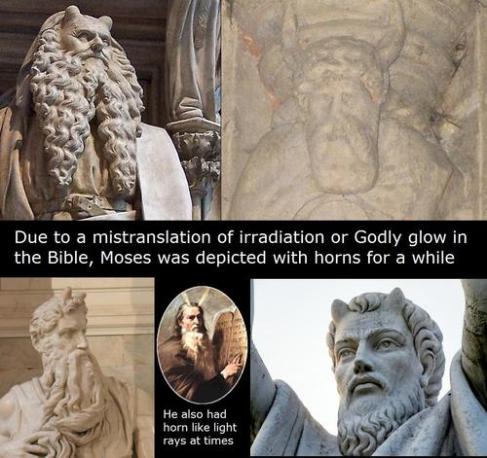Your claim is totally wrong. Simply because the city of Kadesh was never an "Arabic", "Jewish" or "Phoenician" city at the time of Hittites...
It was part of the Hittite empire. The term DEZA देश is a Sanskrit, Hittite (desh) & Slovene (dežela) term and means a "country" and not "Holy"..
I did not say Arabic, Hebrew or Phoenician, but from a Semitic language, which was spoken in Syria at the time (Ugaritic, see below). I cited examples from Arabic and Hebrew because these are
related, modern languages to the Semitic languages attested from that time period (Ugaritic, Eblaite and Akkadian).
You are also overlooking another very important Semitic language,
Aramaic, which was the lingua franca of the Near East for a long period of time, and which replaced Akkadian as the main language in Mesopotamia (before, itself, being replaced by Arabic).
It is a typical occult nonsense, which came from modern Biblical "historians" and remained intact (uncorrected) until today....
Mind your words, I'm not writing "occult nonsense".
That's why is Kadesh = "country/land of Kad/Hat/Hittites" & Hatusha = Hatesha or Hateza or Kadesh (land of Hittites)... Another transliteration of Kadesh was Kanesha, language of Nesha (Hittites).
The reality is the Biblical names derived from much older non-semitic names before them; this includes names of "Abraham, Noah, David, Jesus, Christ, Sarah, Solomon, Hiram Abiff, Rephaim, Nachash, Adonai, YHWH, Joseph, Moses" , etc etc. Kadesh was NOT a city of Hebrews and Hattusa/Hatuša, Neša weren't either... Hittite history is still part of the "Biblical" (Israeli) occult history, and wrong point of view, which is part of the occult history...
I'm not the one who is invoking the bible here. Also, you have thoroughly demonstrated to me that you have no understanding of the Bible or of the Old Testament, because you deliberately use Greek words there:
Christ - Χριστος means "annointed", it is the Greek translation of Hebrew "
mashiakh" (משיח), from which the English "messiah" derives.
Because in old Akkadian remained many Slavic & Sanskrit words. (world was never isolated at that time) And indeed, this has 0 to do with Biblical history...Closest to Rig Vedic Sanskrit is not Hurrian, but Lithuanian, Slovene, Croatian & Serbian, Ukrainian, Persian and Greek...
Really, no offense, but I'm not going to argue with you here because that is just complete nonsense. Do you really think that ancient Babylonians were time travellers who adopted words from languages that were spoken only 2000-3000 years later?

Hurrian (S transmuted into "H; Surian; current territory of Syria) was a Mesopotanian, partially Semitic(Ugaritic),
ergative-
agglutinative language language, Sanskrit is "Indo European"... so your claim is incorrect already from the orthodox/official point of view...
Hurrian was not related with Sanskrit by itself, but it had loanwords from Vedic Sanskrit (most notably terminology relating to horse training). Hurrian, as you say, was an ergative-agglutinative language (unlike the Semitic languages and also unlike the Indo-European languages), and it would be an isolate language if not for Urartian, which was spoken in the iron age in the Lake Van area (in what is now eastern Turkey). Together, the two form the Hurro-Urartian languages.
Now, Ugaritic and Urartian are
completely unrelated. Ugarit was a city state in the area of modern Syria (trade partner of the Hittite Empire, and destroyed alongside the Hittite Empire during the Bronze Age collapse), and they spoke a Semitic language (indeed closely related with Phoenician and Hebrew - the later city states of the Phoenicians were in the
same general area as Ugarit was).
If, as Taranis says, all the Uralic words used to describe pastoral and mining activity are borrowed from the Indo-Europeans, I think that's pretty good evidence that Uralic speaking people were probably living in some place that wasn't suitable for pastoralism until some of them migrated to an area near the Indo-Europeans after the IE languages or at least the IE proto-language had developed. If Uralic developed in Siberia, it would have experienced its first major population expansion after some Uralic speakers crossed the Ural Mountains and came into contact with Indo-Europeans, since pastoralism would support a much larger population than hunting and gathering. Perhaps the Magyars were originally Indo-European but got absorbed by the Uralic people who wanted to learn pastoralism.
I gave the word for "pig" (Finnish "porsas") as an example, which has cognates in Baltic (Lithuanian "paršas"), Celtic (Old Irish "orc"), Germanic (German "Ferkel") and Latin ("porcus"). I was mainly talking about the Finnic (including Finnish and Estonian) branch of the Uralic languages here. Hungarian is sitting at the very different position inside the Uralic languages and is not closely related with the other two. The Magyars were also comparably late immigrants into Europe (late first millennium AD, clearly historic times), and the modern Hungarian language as a result has a large share of Turkic, Slavic and Germanic loanwords picked up much later. Finnish and Hungarian only share their "core" hunter-gather vocabulary (an example for an ancient, Uralic cognate, is the word for 'fish' - Finnish "kala", Hungarian "hal").



